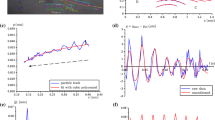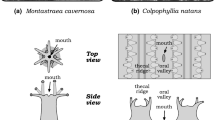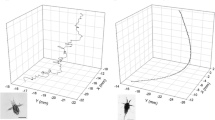Abstract.
Microscope-video recordings were used to describe basic characteristics of particle capture in adult Phoronis muelleri and in its actinotroch larva. The larva captures food particles by means of close interplay between the tentacles and the oral hood. Suspended particles in the incoming water flow set up by the lateral "pump" cilia on the tentacles approach the tentacles with a velocity of about 1.5 mm s–1. Near the tentacles, the particles are stopped by the stiff sensory laterofrontal cilia acting as a mechanical sieve. Simultaneous with stoppage of a particle, the oral hood is rapidly lifted so that water from the surrounding area flows in to occupy the volume created under the hood. Due to the proximity of the tentacle with the arrested particle, this suction will draw the particle away from the laterofrontal cilia into the increased space under the oral hood with a velocity of about 0.6 mm s–1 before it is subsequently carried to the mouth. If a particle is stopped near the tip of a tentacle this may trigger a tentacle flick, with a tip velocity of about 5–7 mm s–1, which brings the particle down toward the lifting edge of the hood. A stopped particle may cause a local disruption of the metachronism of the lateral cilia for about 0.14 s. Likewise in the adult, when an incoming particle with a velocity of about 1.6 mm s–1 is stopped near the tip of a tentacle this triggers a flick, which brings the particle down towards the mouth. The duration of the active flick phase is about one-tenth of the flick cycle. Only when a particle is stopped on the outer part of a tentacle is a flick triggered. Otherwise the particle is either transported down along the frontal surface of the tentacle by means of the frontal cilia, or transferred into the downward current created by the lophophore. The metachronal wave velocity is about 0.25 mm s–1, the wavelength about 12 µm, and hence the ciliary beat frequency about 21 Hz (at ~16°C). Essential features of the filter-feeding process in both actinotroch larvae and adult P. muelleri reported here resemble the ciliary-sieving process described for bryozoans in recent years. It should be pointed out that the stiff, mechanosensory laterofrontal cilia may be a decisive factor for understanding ciliary upstream collecting, also in pterobranchs and brachiopods in which sensory laterofrontal cilia are present.
Similar content being viewed by others
Author information
Authors and Affiliations
Additional information
Electronic Publication
Rights and permissions
About this article
Cite this article
Riisgård, .H. Methods of ciliary filter feeding in adult Phoronis muelleri (phylum Phoronida) and in its free-swimming actinotroch larva. Marine Biology 141, 75–87 (2002). https://doi.org/10.1007/s00227-002-0802-0
Received:
Accepted:
Issue Date:
DOI: https://doi.org/10.1007/s00227-002-0802-0




